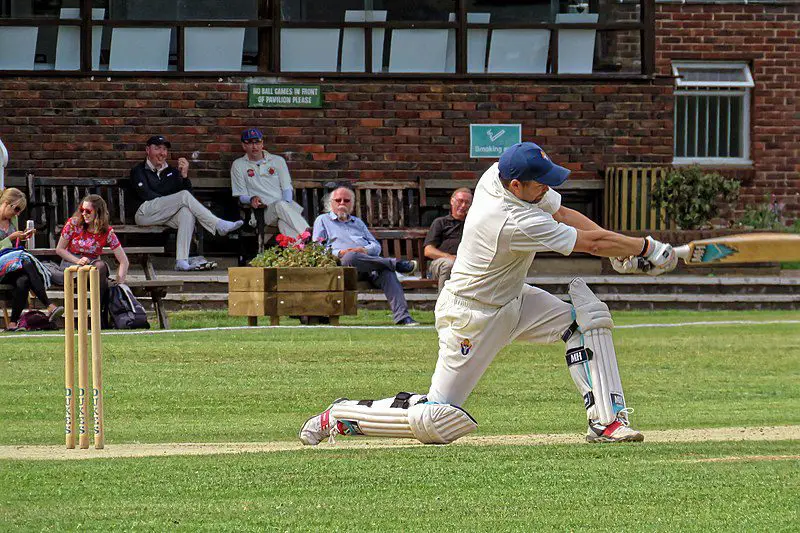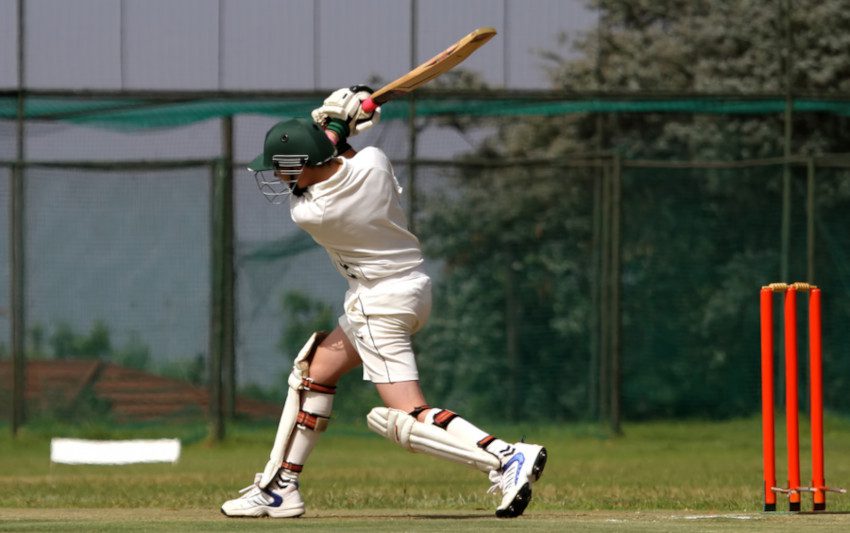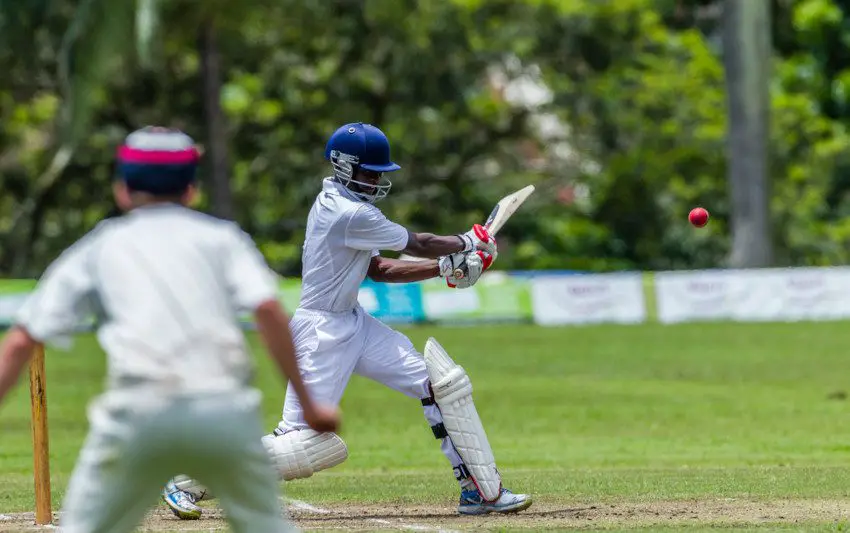Table of Contents
It started out as a new innovation in the game of cricket, but the reverse sweep has now become more commonplace. Let’s take a look at its history, along with a guide as to how it’s played.
What is a Sweep Shot in Cricket?
A sweep shot is an attacking stroke in cricket which is played to a full length ball. It’s usually played to spin bowling, but it can also be used against quicker bowlers.
As the ball is delivered, the batter will bend his front leg. The bat comes horizontally across the pad from the off to the leg side. If played correctly, the ball will travel along the ground towards the leg side boundary.
In recent years, we’ve seen more players taking on the reverse sweep. This is similar in nature to the conventional sweep shot as it is still played to a full length ball. The technique is largely the same, but there is one key difference: Batsmen, at the point that the ball is released, will switch their hands and look to hit the ball from the leg side to the off side.

Who Invented the Reverse Sweep Shot?
It’s widely acknowledged that Mushtaq Mohammed was the first batsman to play a reverse sweep shot. There are, however, some conflicting reports on this point.
Some stories claim that Hanif Mohammed, Mushtaq’s brother, was the first to play the shot. What we do know is that Mushtaq Mohammed was the first to use the reverse sweep extensively in domestic and international cricket.
How to Play the Reverse Sweep Shot?
Preparing
The batter should remain in their normal position as the bowler runs in to release the ball. Check out my other articles which cover the regular batsman’s stance.
Professional batters may play the reverse sweep as a premeditated shot, but this isn’t recommended when you’re just starting out. It’s advisable to take a few balls to assess the bowler and to judge their regular line and length.
Once you’ve faced a few deliveries, you can judge how the ball comes out of the bowler’s hand, along with other key elements such as the flight and speed. Having taken time to assess all of this, you will have a better idea of when it’s right to play the sweep shot.
There is one, final piece of advice that relates to preparation. Anyone looking to play the reverse sweep should practise it regularly. It is a hard stroke to master and the more times that you practise in the nets or on the outfield, the greater chance you will have of executing it correctly.
Get into the nets and, if you have access to a bowling machine, set it at a relatively slow speed and aim for some full length deliveries. If no machine is available, ask a group of bowlers to send some throwdowns.
The more practise that you can get in, the better your chances of playing the reverse sweep effectively in a match situation.
Playing the Shot
As soon as the ball is delivered, the batter should look to go onto the front foot. The front knee should now bend as if the player is looking to stretch. If the length of the ball is not right, the player should adjust if possible. If the delivery is full, the sweep shot is on and the batter can go to the next stage.
The front knee now bends completely to its full extension. The knee of the back leg should be touching the ground.
If the batter is playing the conventional sweep shot, the arms come across the body and the bat moves horizontally, in a sweeping motion, from the off side to the leg side. Timing is important and, ideally, the ball should be struck on the half volley.
Swing the bat to follow through and, hopefully, watch it travel to the boundary.
With the reverse sweep, the technique is largely the same. However, the hands will switch and the arms will move from the leg side to the off side as the ball is struck towards the off side boundary.
When Should you Play a Sweep Shot?
A sweep shot should be played when the ball is full, either on a good length, a half volley length or slightly overpitched. Traditionally, the sweep was played to deliveries that pitched on middle and leg or leg stump.
Since innovation started to creep into limited overs cricket, the shot was played from off stump in some cases. Then, after it was pioneered by the likes of Mushtaq Mohammed, the reverse sweep became more commonplace.
In those early days, the reverse was most commonly played to deliveries on middle and off and off stump. As the game of cricket has evolved, the shot is now played to any type of full delivery.
Is it Difficult to Play a Reverse Sweep?
If you haven’t practised the reverse sweep, it is extremely difficult to play. It goes against the instructions from a regular coaching manual and literally reverses everything that you have learned as a young cricketer.
When you’re attempting to master the reverse sweep, it’s difficult to go against your instincts of playing the conventional sweep shot. That’s why it pays to practise in the nets or out in the outfield.
Conclusion
As someone who started playing cricket before the reverse sweep was widely played, I found this to be an extremely difficult shot. Mentally, you are looking to play a conventional sweep and this new stroke just seemed to go against everything that I had been coached.
Obviously there are big benefits to playing this shot when it’s executed correctly. The fielding side will find it extremely tough to set a field for the reverse sweep and that is likely to lead to plenty of gaps on the off side.
There is also a higher degree of risk, and the possibility of getting out LBW is increased if you miss the ball completely. In summary, I would say that this is a potentially valuable shot but, if you are a youngster starting out or, if you are a regular club cricketer, you really need to keep practicing the reverse sweep before using it in a match.


